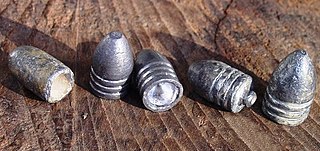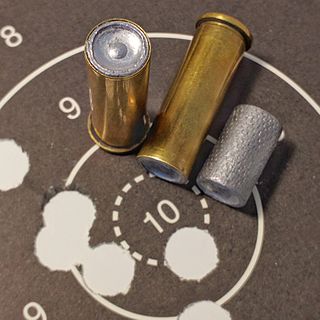Top Qs
Timeline
Chat
Perspective
Hollow-base bullet
Firearm bullet with a pit in its base From Wikipedia, the free encyclopedia
Remove ads
A hollow-base bullet is a firearm bullet with a pit or hollow in its base which expands upon being fired, forcing the base to engage with the barrel grooves and obturating the bore more as the bullet travels through the barrel.[1][2] Hollowing the base makes the bullet more front-heavy, which improves aerodynamic stability and accuracy.


Remove ads
History
Two men have been credited with the invention of the hollow-base bullet: Captain Claude-Étienne Minié of the French Army and William Greener.[3][4][5] The initial reason for developing a hollow-base bullet was to improve usability and performance of muzzle-loading rifles using black powder propellant.[1]
See also
References
Wikiwand - on
Seamless Wikipedia browsing. On steroids.
Remove ads
